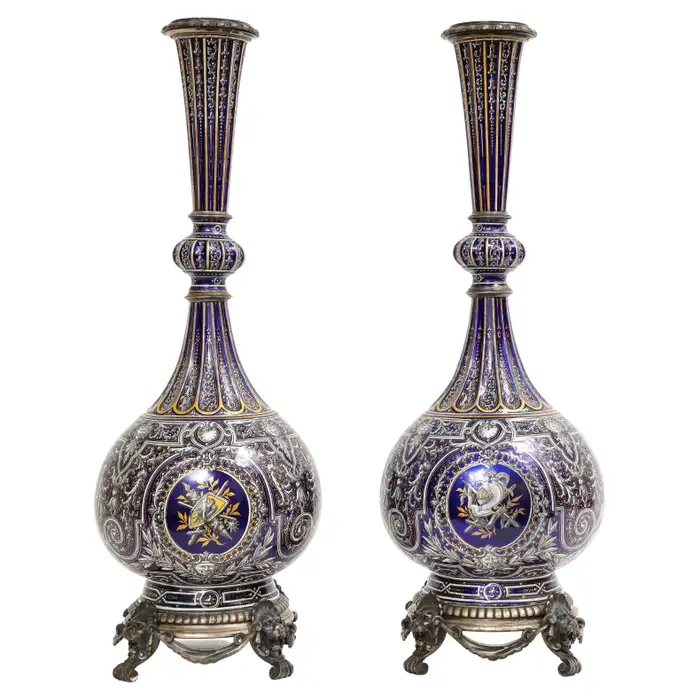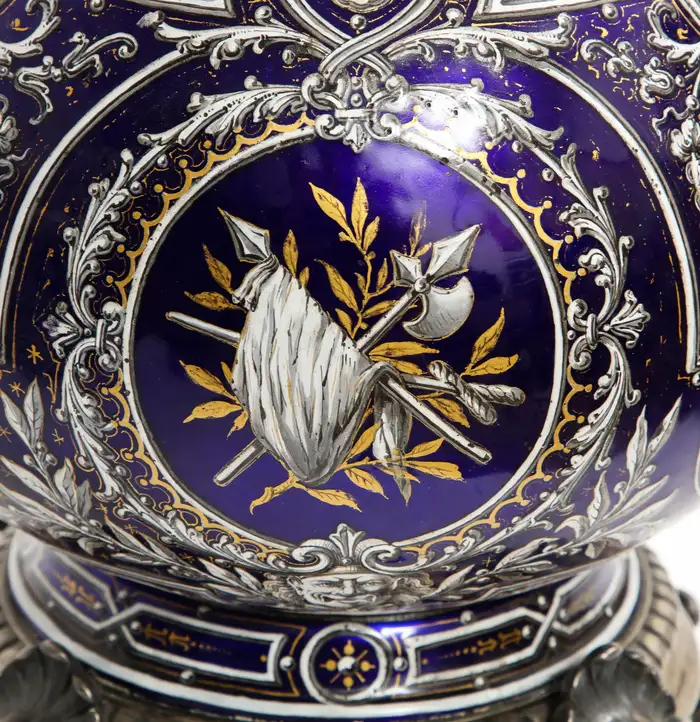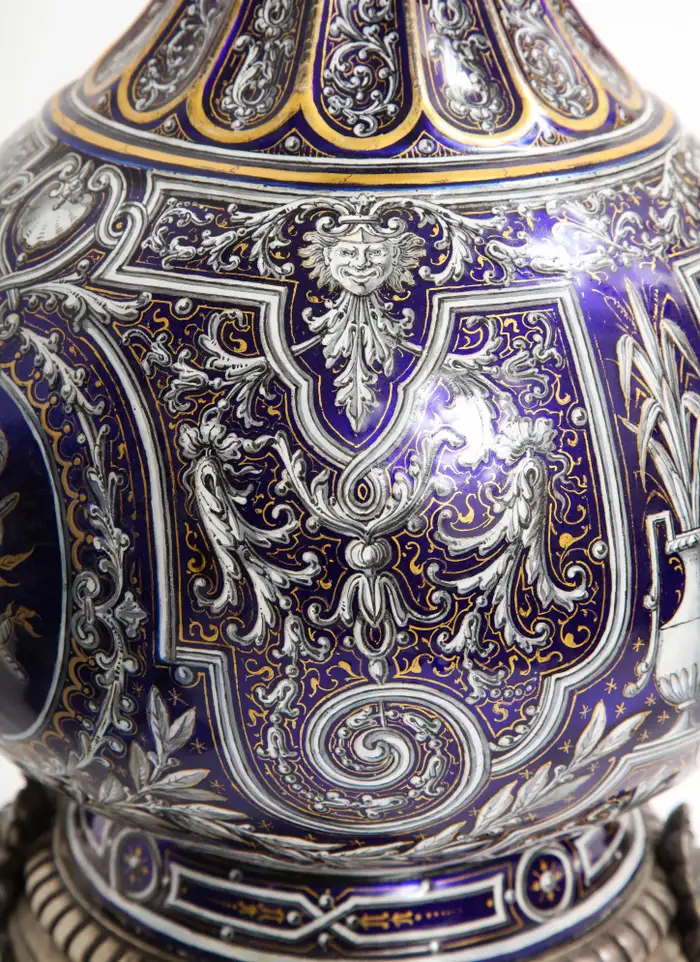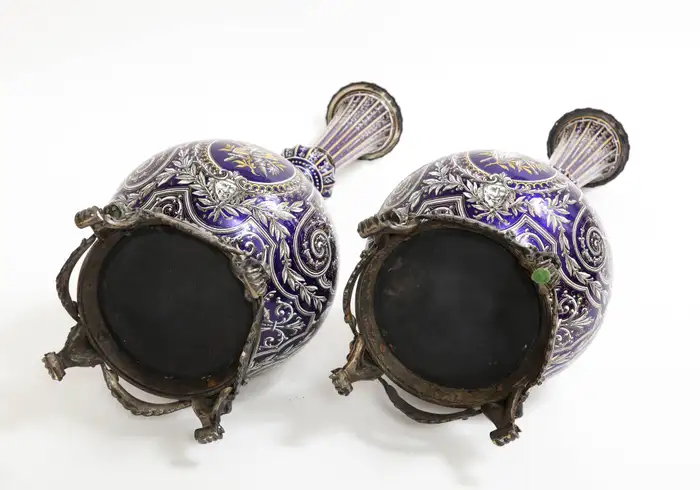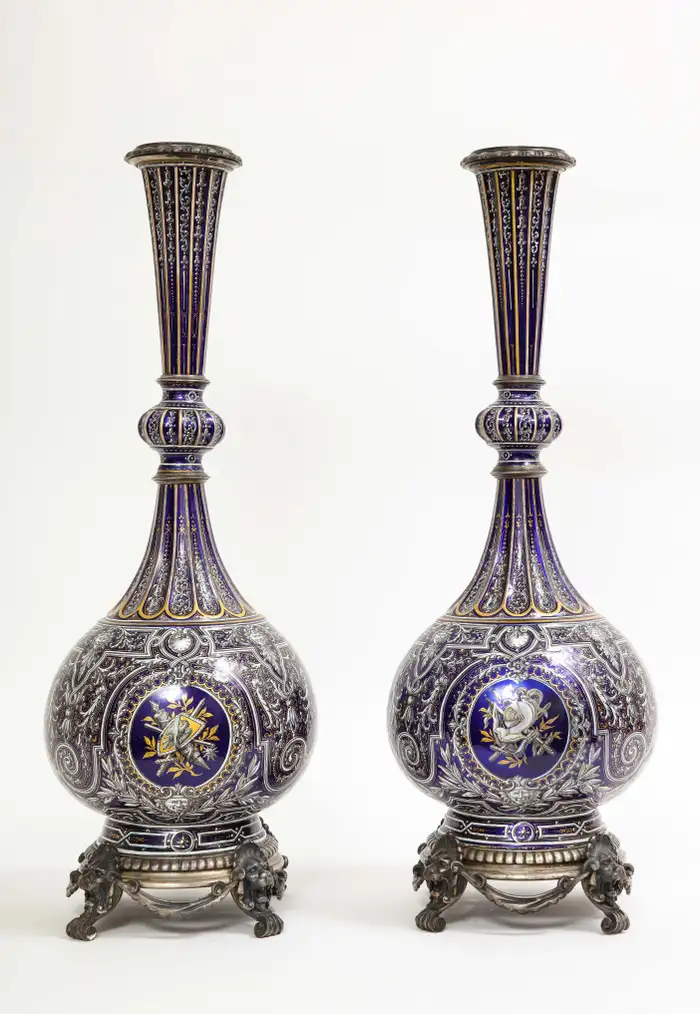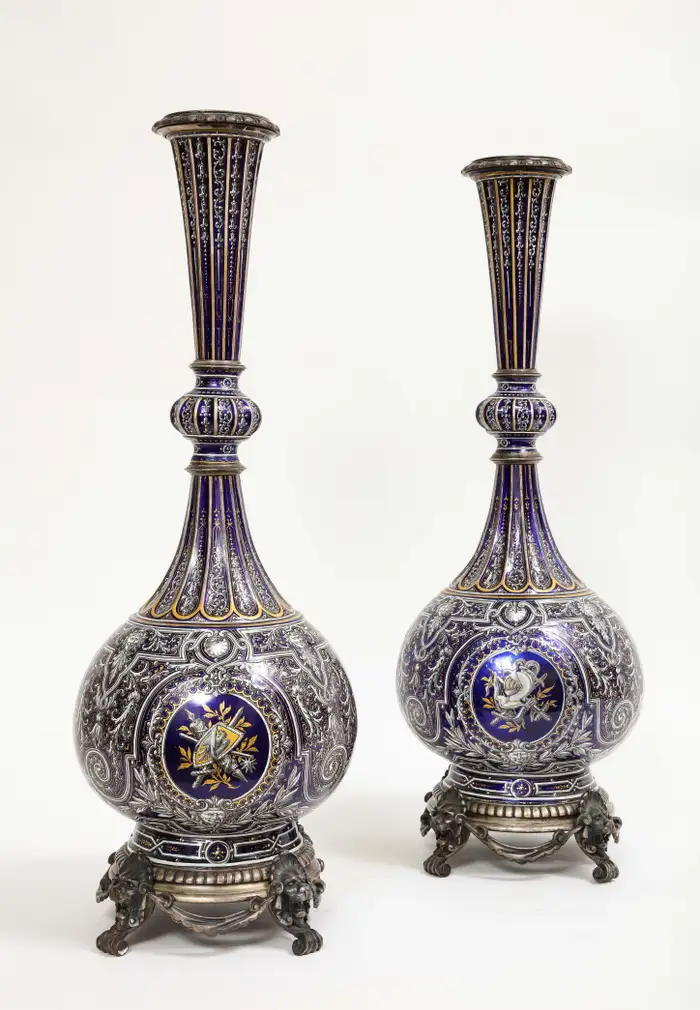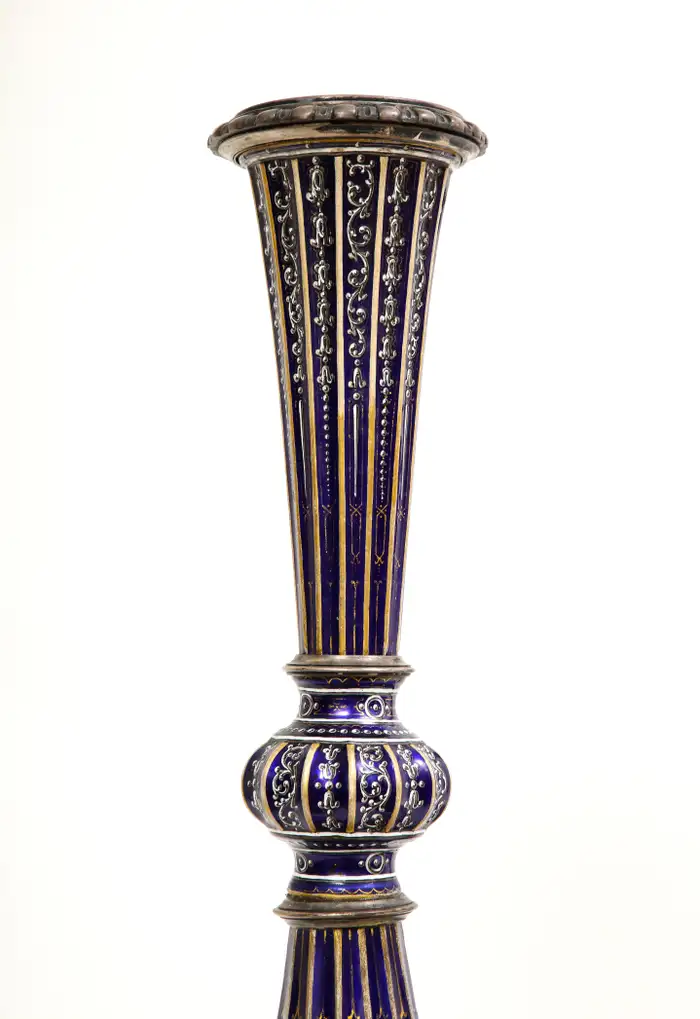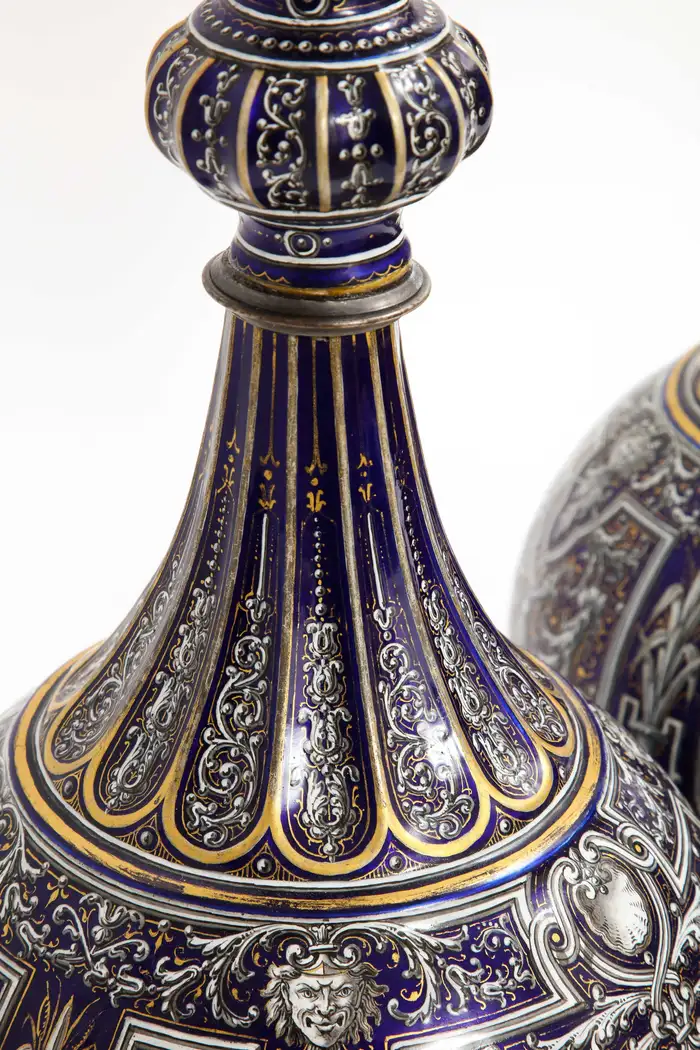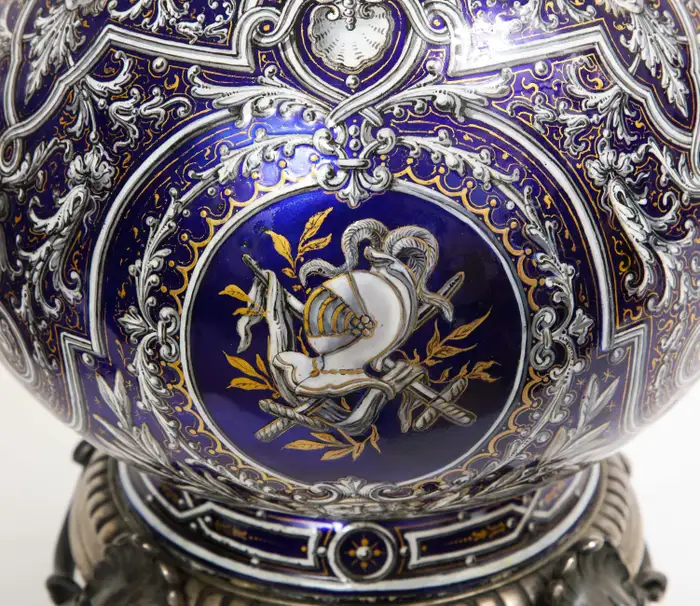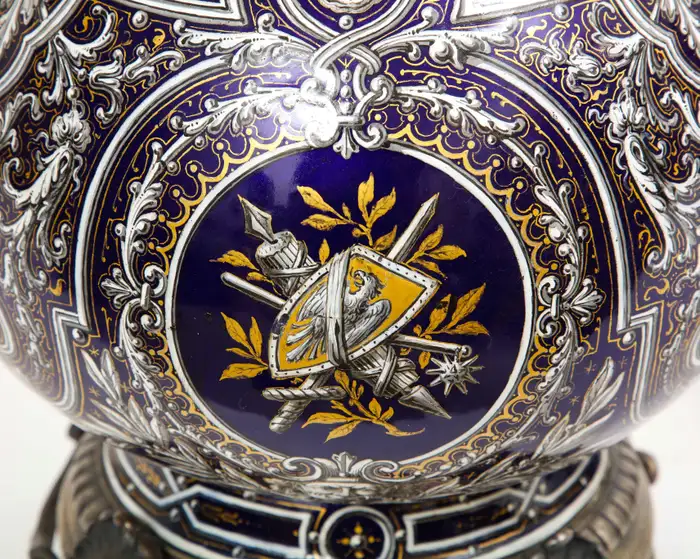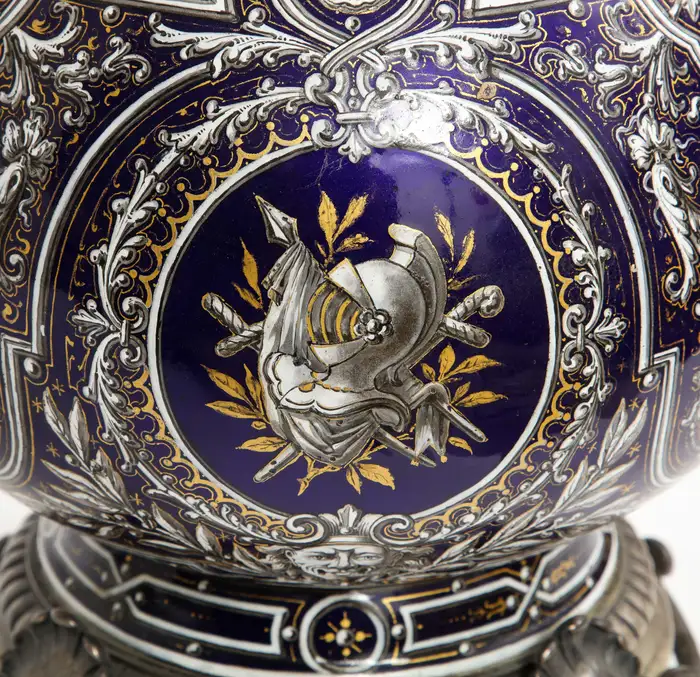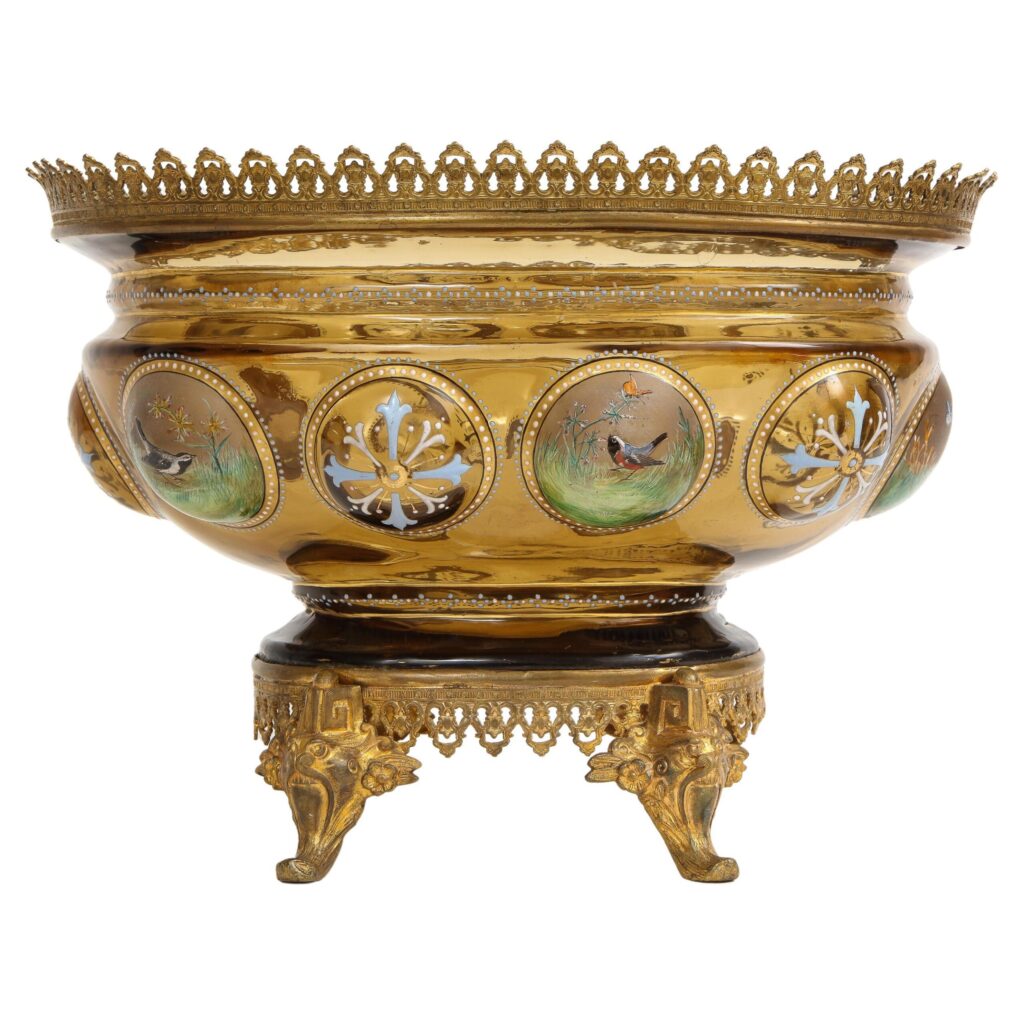Pair of French 19th C. Silvered Bronze Mounted Enameled Copper Armorial Vases
$0.00
+ Free ShippingOut of stock
Product Description
A fantastic and large pair of French 19th century silvered bronze mounted limoges enameled copper armorial vases. Each vase has a bulbous body with a wasting neck. The tops and bases of the vases are mounted on silvered bronze mounts, each with hand-chased and hand-chiseled mounts. The base mounts are cast with lions masks which have scalloped ribbons which hinge from each of the lions heads. The vases are each hand-enameled with gorgeous floral and vine-like designs throughout, they are further adorned with 24k gilt decoration which highlights the high-contrast which enamel over the cobalt blue ground. Each vases body has two medallions with hand-enameled decoration of armorial helmets with long swords and gold leaves. The other circular medallion is decorated with a shield decorated with an eagle further decorated with a mase, sword, and pointed baton. Vases of this size with this level of decoration, quality, condition, and subject are extremely rare and museum quality.
France, Circa: 1850
Since the Middle Ages, the city of Limoges in central France thrived on the artistic production of enamel on metal. Similar in composition to glass, enamel consists of silica and a fluxing agent colored by metallic oxide or carbonate and fused to a metal surface by heat. From the twelfth through the fifteenth century, Limoges enamel painters gouged into the surface of the metal (champlevé) or raised thin dams between areas of color (cloisonné) to establish the design and to prevent pigments from mixing. By the end of the fifteenth and beginning of the sixteenth centuries, materials and techniques developed that permitted painters to apply enamels more freely to copper surfaces, without obvious demarcations between areas of color, in a manner that approached the painting of oil on paint or canvas. Unlike oil painting, enameled metal retains its hue without fading, or tel que l’ambre une fleur (like a flower in amber), as the poet Théophile Gautier wrote in a sonnet to the nineteenth-century enamel painter Claudius Popelin.
This technical development paralleled the growing cult of antiquity in France and the widespread circulation of printed images. While religious themes had dominated Limoges enamels in the Middle Ages and continued to cover the surfaces of Limoges plaques particularly in the first third of the sixteenth century, images of Greek and Roman subjects, readily available to painters through engravings and woodcuts, predominated from the 1530s.
Citations:
Metropolitan Museum of Art, Images of Antiquity in Limoges Enamels in the French Renaissance

